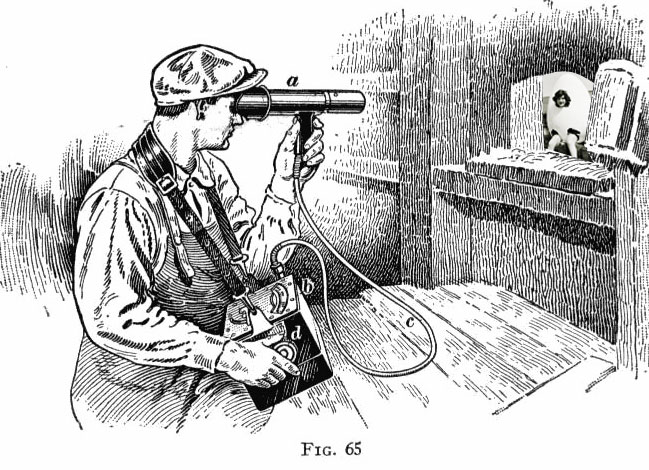Original French: Ne me cõparez icy celle arbre que Alexander Cornelius nommoit Eonem.
Modern French: Ne me comparez icy celle arbre que Alexander Cornelius nommoit Eonem.
Notes
Ne me comparez… excuse
Addition de 1552.
François Rabelais [ca. 1483–1553]
Le Tiers Livre
p. 585
Pierre Michel, editor
Paris: Gallimard, 1966
Alexander Cornelius
Agricola mentions Aexander Cornelius “among the names of writers whose works I have used, also writers whose works are not extant.”
Georgius Agricola [1494–1555]
De Natura Fossiliump. 223
Mark and Jean Bandy, translator
1546
Google Books
eonem
Eonem est l’accusatif d’eone, qui est, selon Pline, le nom d’une sorte d’arbre qui porte de gui comme le chêne, et dont fut fait le navire Argo.
François Rabelais [ca. 1483–1553]
Œuvres de Rabelais (Edition Variorum). Tome Cinquièmep. 293
Charles Esmangart [1736-1793], editor
Paris: Chez Dalibon, 1823
Google Books
Alexander Cornelius nommoit eonem
Alexander Cornelius arborem leonem appellavit ex qua facta esset similem robori viscum ferentem, quae neque aqua neque igni posset corrumpi, sicuti nec viscum, nulli alii cognitam, quod equidem sciam.
Alexander Cornelius mentions a tree called the lion-tree, the timber of which he says was used to build the Argo, which bears mistletoe resembling that on Valonia oak, which cannot be rotted by water or destroyed by fire, the same being the case with its mistletoe. This tree is, so far as I am aware, unknown to anyone else.
Pliny the Elder [23–79 AD]
The Natural History. Volume 4: Books 12–1613.39
Harris Rackham [1868–1944], translator
Cambridge, Massachusetts: Harvard University Press, 1945
Loeb Classical Library
eonem
Rabelais emprunte ici étourdiment un accusatif de Pline! Eonem est l’accusatif d’eon nom d’un arbre inconnu, inattaquable par l’eau et le feu, cité par Pline, XIII, 39, d’après le naturaliste Alexander Cornelius: «Alexander Cornelius arborem eonem appellavit, ex qua facta esset Argo, similem robori viscum ferenti, quæ nec aqua nec igne possit corrumpi, sicuti nec viscum; nulli alii cognaitam quod equidem sciam.» (Paul Delaunay)
François Rabelais [ca. 1483–1553]
Oeuvres. Tome Cinquieme: Tiers Livre. Édition critiquep. 373
Abel Lefranc [1863-1952], editor
Paris: Librairie Ancienne Honoré Champion, 1931
Archive.org
eonem
Tout cela est tiré de Pline, XIII, 39. Ce n’est pas par étourderie que Rabelais garde à accusatif le mot eon, c’est par pédantism. De même au Quart Livre, XXVIII, Rabelais écrira tantôt Thamous tantôt Thamoun, suivant que le mot est au nominatif ou à l’accusatif, etc. en français. Cf. plus bas, l 101.
François Rabelais [ca. 1483–1553]
Le Tiers Livre. Edition critique
Michael A. Screech [b. 1926], editor
Paris-Genève: Librarie Droz, 1964
eon
Rabelais en 1552 ajoute une réference à l’eon et au chêne dont fut construite la célèbre nef Argo. Ces additions explicitent le dessein de Rabelais dans ce dernioer chapitre.
Il n’est pas impossible qu’eon doive être pris dans un sens symbolique. K. Baldinger, «Eon, plante énigmatique chez Rabelais, et le Pantagruélion», Études rabelaisiennes, XXIX, 1993, p. 139-144, a rapprochée le mot d’eon (chacune des puissances éternelles émanées de l’être suprême et par lesquelles s’exerce son action dans le monde, selon Balentin et les gnostiques [Trévous, 1721]) du grec αίών, «l’esprit du monde, l’éternité». Selon lui, p. 144, Rabelas devait rattacher le terme à aeon «d’autant plus que cette interprétation coïncidait parfaitement avec l’essence de sa pensée et le sens profond du pantagruélion.».
François Rabelais [ca. 1483–1553]
Œuvres complètes
p. 509, n. 4
Mireille Huchon, editor
Paris: Gallimard, 1994
Eonem
Accusatif d’eon, nom d’un arbre inattaquable par l’eau et par le feu (Pline XIII, xxxix, d’après le naturaliste Alexander Cornelius); addition de 1552 (var. b). La forme eonem est une tradition récente dans les manuscripts de Pline (Codex Vindobonensis du XIIe), la formne originelle étant leonem (voir L. Baldinger, «Eon […]», p. 143-144).
François Rabelais [ca. 1483–1553]
Œuvres complètes
p. 511, n. 6
Mireille Huchon, editor
Paris: Gallimard, 1994
eonem
Pline, XIII, 22: «Alexander Cornelius a laissé par memoire que le navire de Jason et des autres Argonautes estoit fait du bois d’un arbre nommée Eon, qui ne pouvait estre consumé ne par eau ny par feu, non plus que le Guy : disant cest arbre semblable au Rouvre qui porte le Guy. Mais je crois que luy seul a eu la cognoissance de cest arbre, selon que je puis comprendre.» Selon l’usage de son temps Rabelais emploie l’accusatif eonem puisque ce mot est, dans sa phrase, attribut du complément d’object. Il serait hasardeux de chercher ici une allusion aux éons gnostiques.
François Rabelais [ca. 1483–1553]
Le Tiers Livre. Edition critique
p. 472
Jean Céard, editor
Librarie Général Français, 1995

